The Effect of High-Speed Steam Discharged from the Bypass Diffusers on Low-Pressure Turbine Blades
Abstract
:1. Introduction
2. Computational Method
2.1. Physical Model and Computational Domain
2.2. Grid Generation
2.3. Calculation Method and Boundary Conditions
2.4. Empirical Formula Validation
3. Calculation Results and Analysis
3.1. Steady-State Simulation
3.2. Transient Simulation
3.2.1. The Transient Characteristics of the Flow Field
3.2.2. The Transient Characteristics of the Forces Acting on the Last-Stage Rotating Blades
4. Conclusions
Author Contributions
Funding
Data Availability Statement
Acknowledgments
Conflicts of Interest
References
- Akhtar, S.Z. Proper steam bypass system design avoids steam turbine overheating. Power Eng. 2003, 107, 44–49. [Google Scholar]
- Eaton, R.H.; Blessman, E.R.; Schoonover, K.G. Design considerations and operation of condenser bypass systems in combined cycle power plants: Part 2. In Proceedings of the ASME 2004 Power Conference, Baltimore, MD, USA, 30 March–1 April 2004; Volume 41626, pp. 263–268. [Google Scholar]
- Eaton, R.H.; Blessman, E.R.; Schoonover, K.G. Design considerations and operation of condenser bypass systems in combined cycle power p: Part 1. In Proceedings of the ASME 2004 Power Conference, Baltimore, MD, USA, 30 March–1 April 2004; Volume 41626, pp. 255–262. [Google Scholar]
- Lu, C.; Yang, J.; Zhang, Q. Pressure Transient Analysis on the Condenser of the HPR1000 Nuclear Power Unit. Energies 2024, 17, 1210. [Google Scholar] [CrossRef]
- Zu, S.; Chen, J.; Che, Y.; Wang, G.; Wu, Z.; Wang, J.; Zhu, C.; Zhang, Q.; Dong, B. Research on steam flow excited vibration of nuclear power condenser based on full three-dimensional numerical simulation technology. AIP Adv. 2022, 12, 035015. [Google Scholar] [CrossRef]
- Heat Exchange Institute, Inc. Standards for Steam Surface Condensers, 12th ed.; HEI-2629, Heat Exchange Institute: Cleveland, OH, USA, 2018. [Google Scholar]
- Sebald, J.F.; Phillips, N.A.; Haman, L.L. Haman. Recommended Guidelines for the Admission of High-Energy Fluids to Steam Surface Condensers; EPRI-CS-2251; Electric Power Research Institute: Palo Alto, CA, USA, 1982. [Google Scholar]
- Nightingale, D.M. Design guidelines for the safe operation of steam surface condenser turbine bypass on combined cycle power plants. In Proceedings of the ASME Power Conference, Charlotte, NC, USA, 26–30 June 2017. [Google Scholar]
- Connors, H.J., Jr. Fluidelastic vibration of heat exchanger tube arrays. J. Mech. Des. 1978, 100, 347–353. [Google Scholar] [CrossRef]
- Wu, F.; Han, A.; Jiang, W.; Yue, Y.; Xie, D. A biomimetic design of steam turbine blade to improve aerodynamic performance. Int. J. Therm. Sci. 2022, 181, 107782. [Google Scholar] [CrossRef]
- Menter, F.R. Two-equation eddy-viscosity turbulence models for engineering applications. AIAA J. 1994, 32, 1598–1605. [Google Scholar] [CrossRef]
- Bardina, J.E.; Huang, P.G.; Coakley, T.J. Turbulence Modeling Validation, Testing, and Development. In NASA Technical Memorandum; Ames Research Center: Moffett Field, CA, USA, 1997. [Google Scholar]
- Shabani, S.; Majkut, M.; Dykas, S.; Smołka, K.; Lakzian, E. An investigation comparing various numerical approaches for simulating the behavior of condensing flows in steam nozzles and turbine cascades. Eng. Anal. Bound. Elem. 2024, 158, 364–374. [Google Scholar] [CrossRef]
- Wang, W.; Gao, J.; Shi, X.; Xu, L. Cooling performance analysis of steam cooled gas turbine nozzle guide vane. Int. J. Heat Mass Transf. 2013, 62, 668–679. [Google Scholar] [CrossRef]
- Win Naung, S.; Rahmati, M.; Farokhi, H. Direct Numerical Simulation of Interaction between Transient Flow and Blade Structure in a Modern Low-Pressure Turbine. Int. J. Mech. Sci. 2021, 192, 106104. [Google Scholar] [CrossRef]
- Rajesh, B.C.; Hensh, P.K. CFD analysis of a single stage intermediate pressure steam turbine. Mater. Today Proc. 2021, 45, 58–64. [Google Scholar] [CrossRef]
- Fowler, J. Factors Affecting the Design of Turbine-Condenser Connections. J. Eng. Power. 1977, 99, 429–436. [Google Scholar] [CrossRef]
- Nagamatsu, H.; Sheer, R.J. Subsonic and supersonic jets and supersonic suppressor characteristics. In Proceedings of the Aeroacoustics Conference, Seattle, WA, USA, 15–17 October 1973; p. 999. [Google Scholar]
- Yang, S.; Du, W.; Luo, L.; Wang, S. Effects of flow coefficient on turbine aerodynamic performance and loss characteristics. Int. J. Aerosp. Eng. 2022, 2022, 4633333. [Google Scholar] [CrossRef]

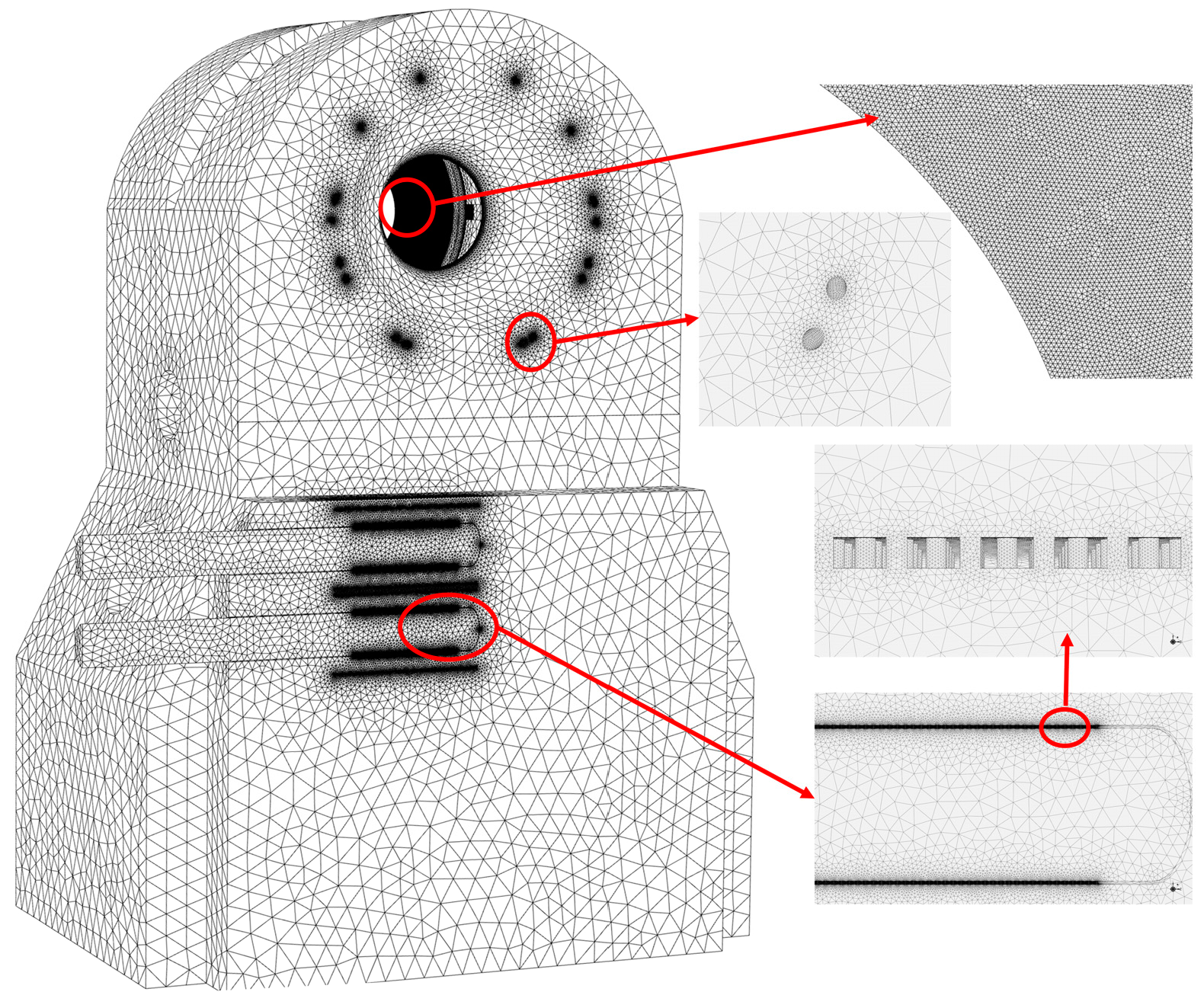


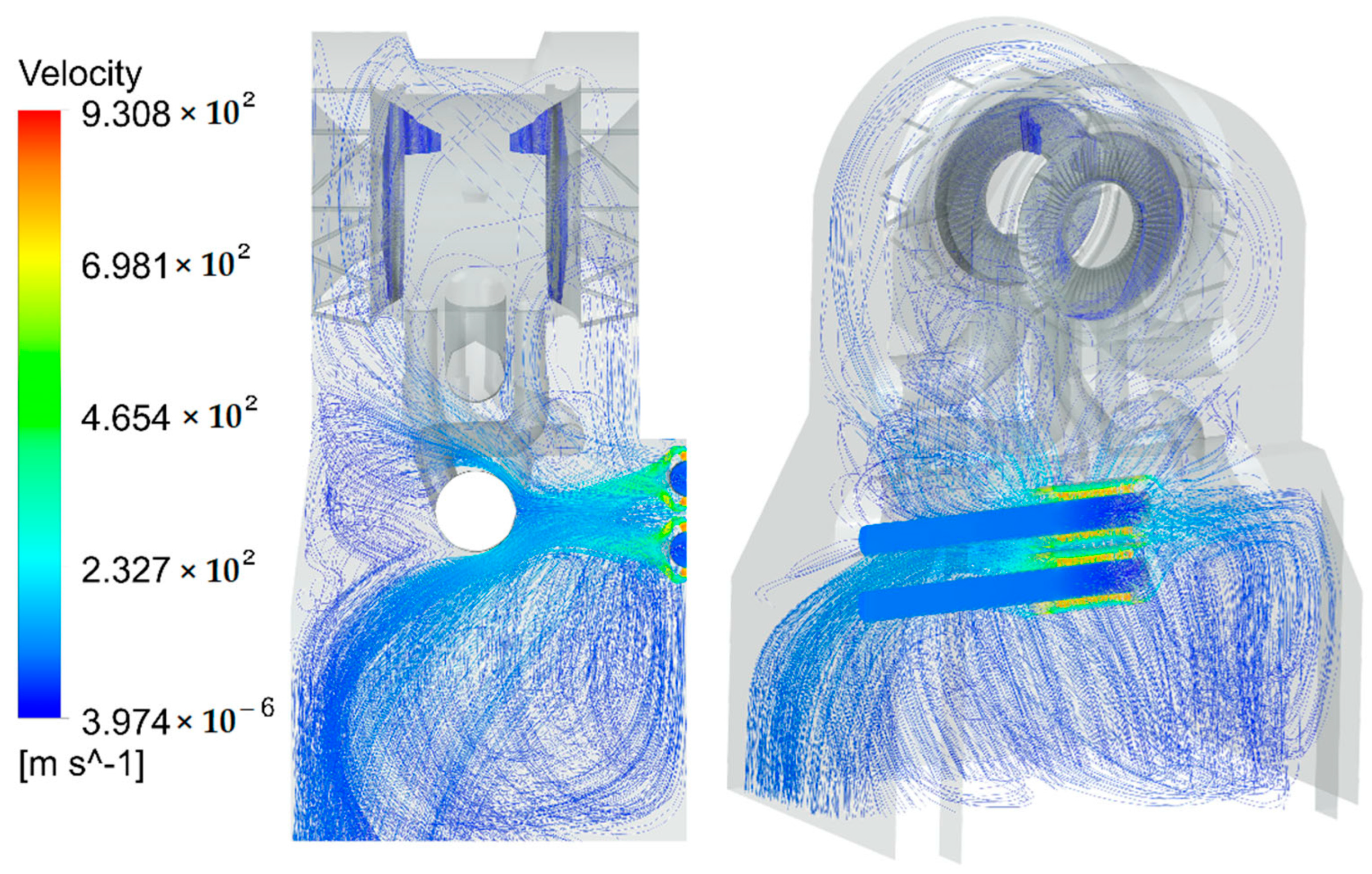
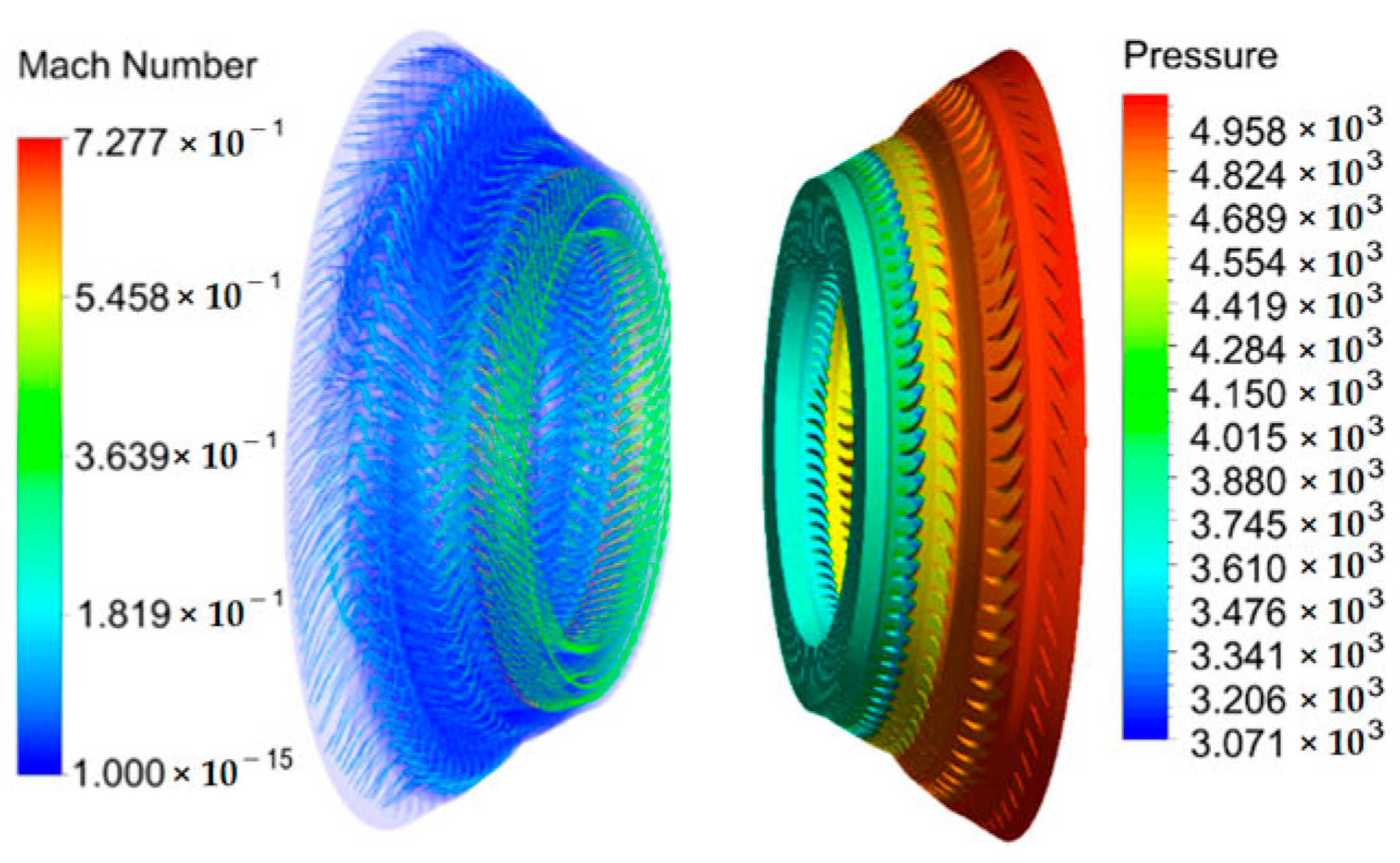
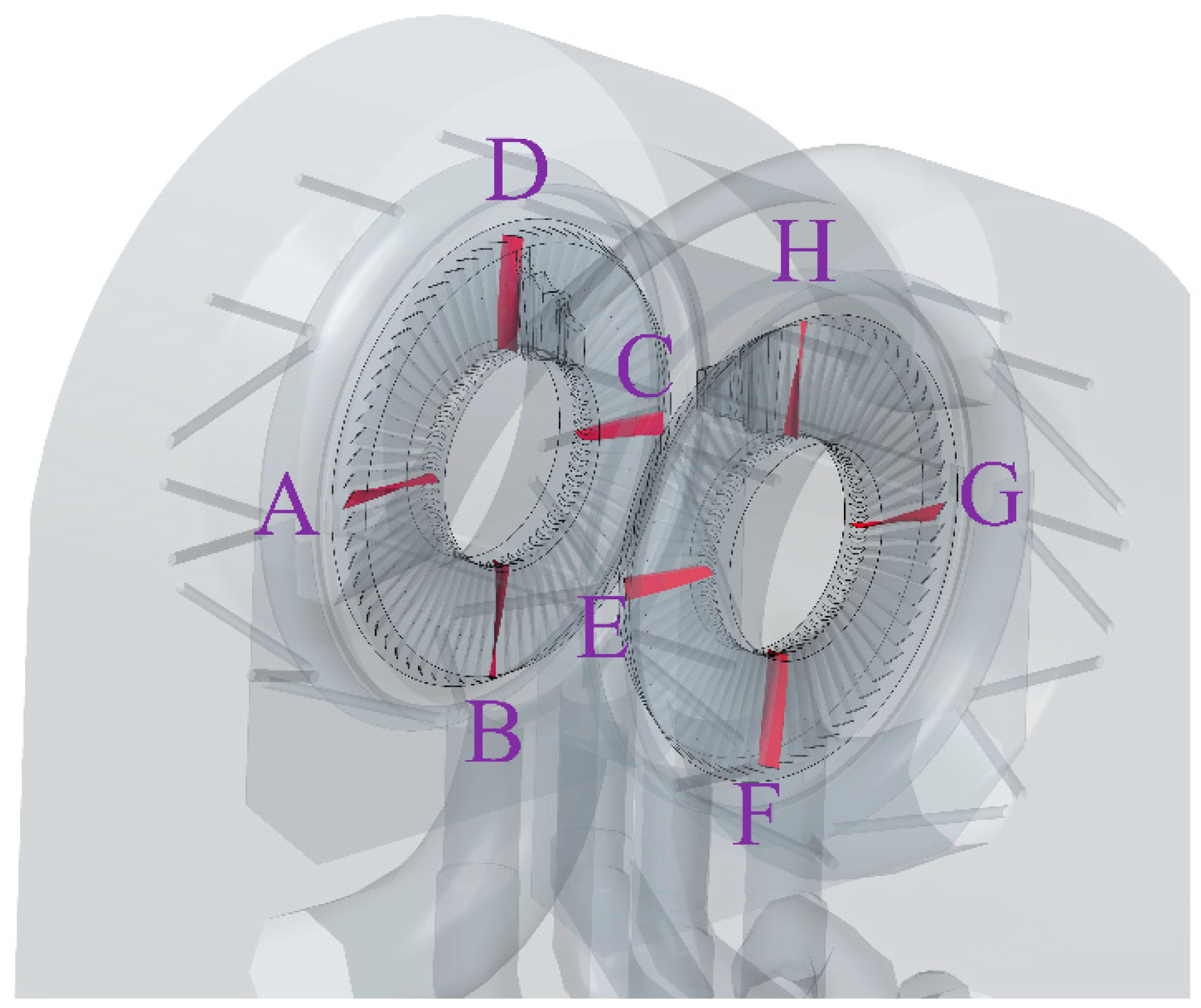
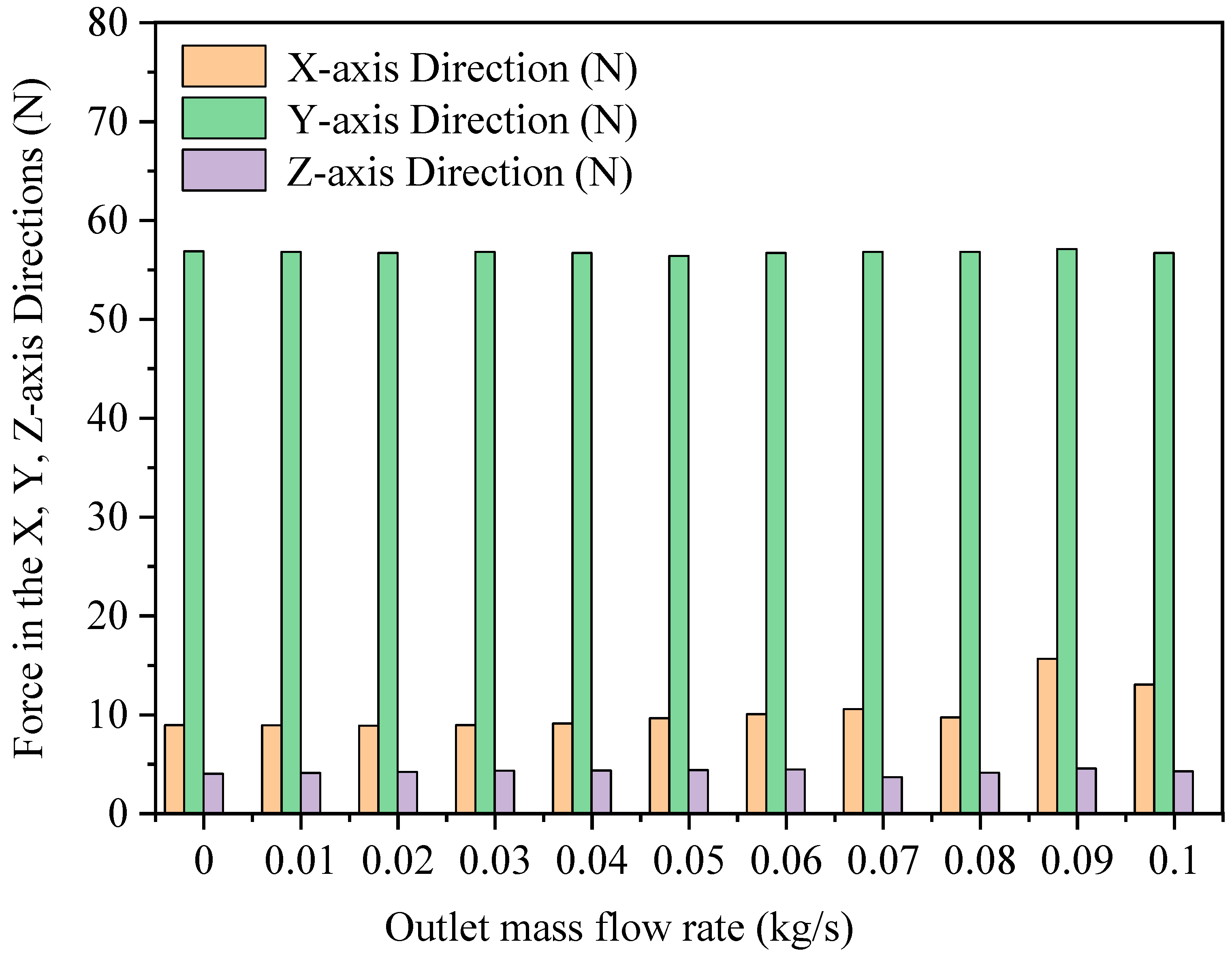
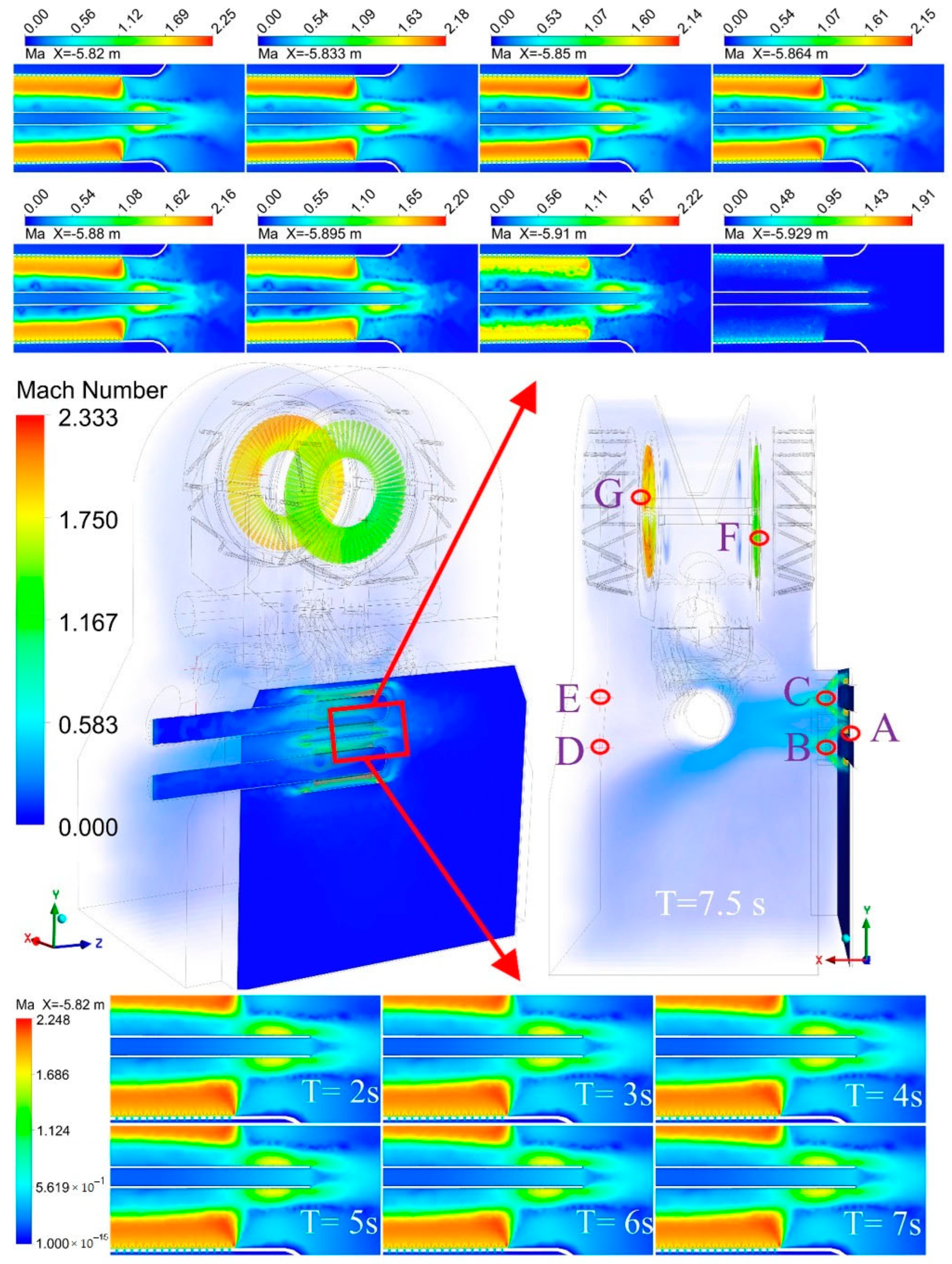
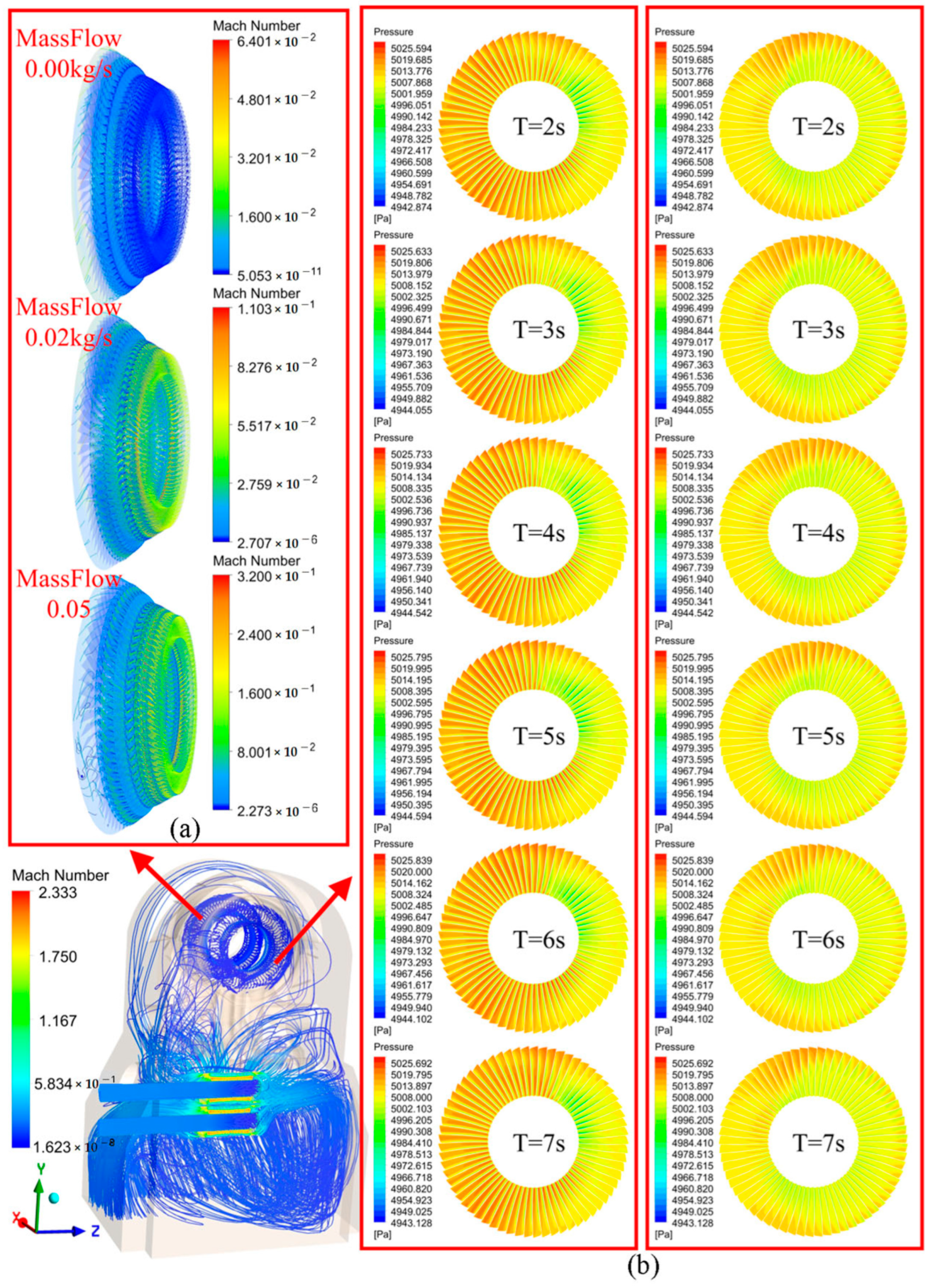

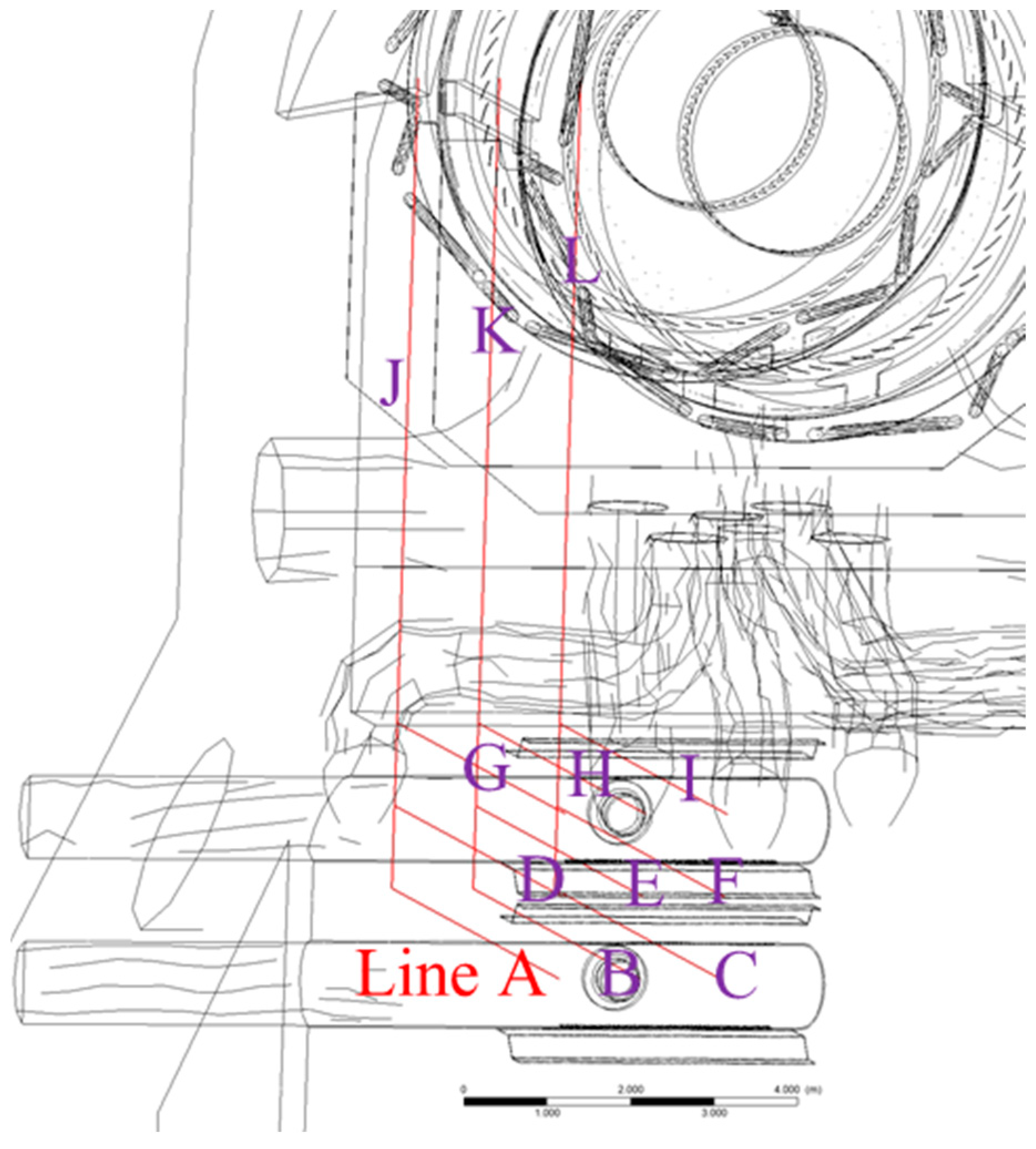

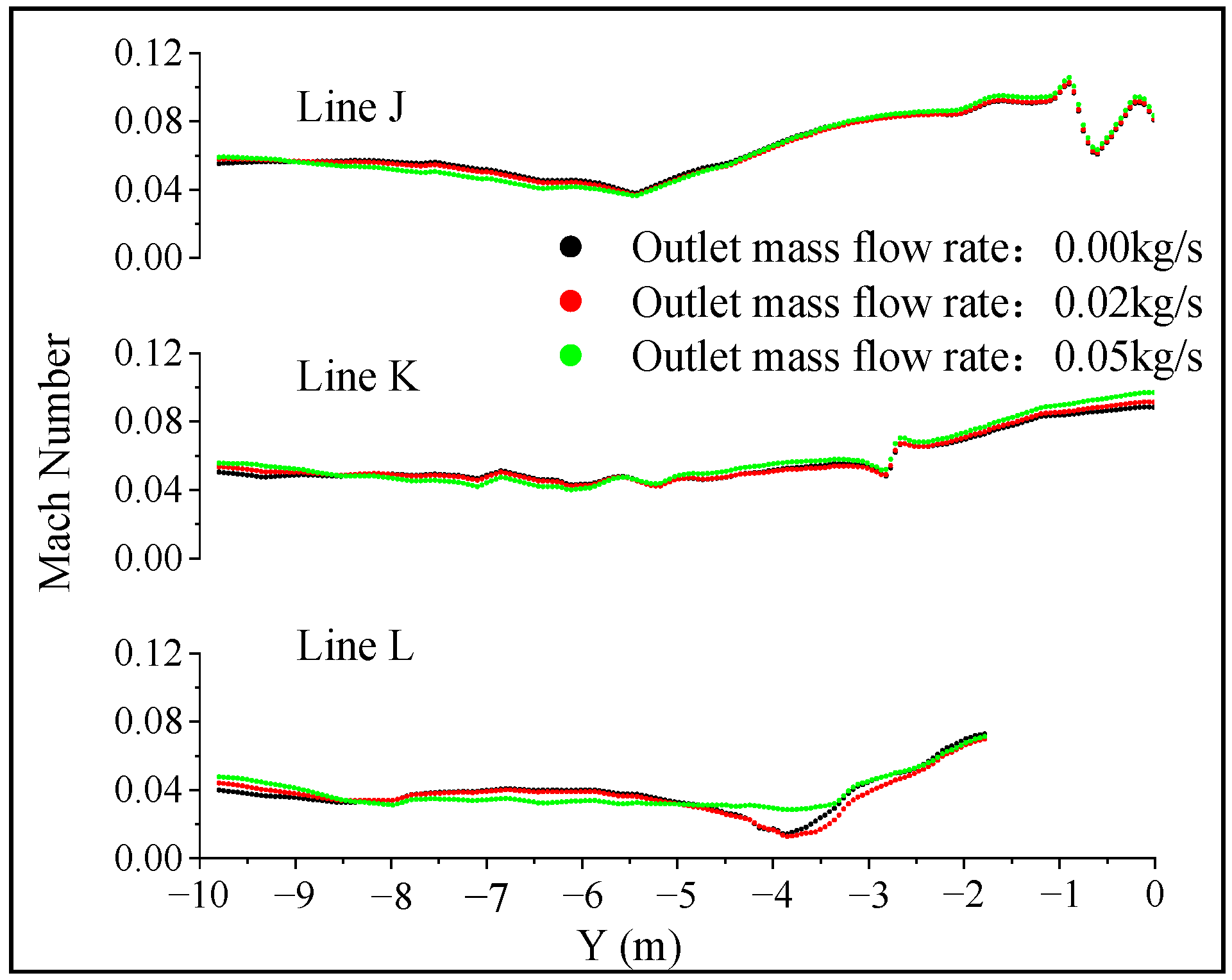
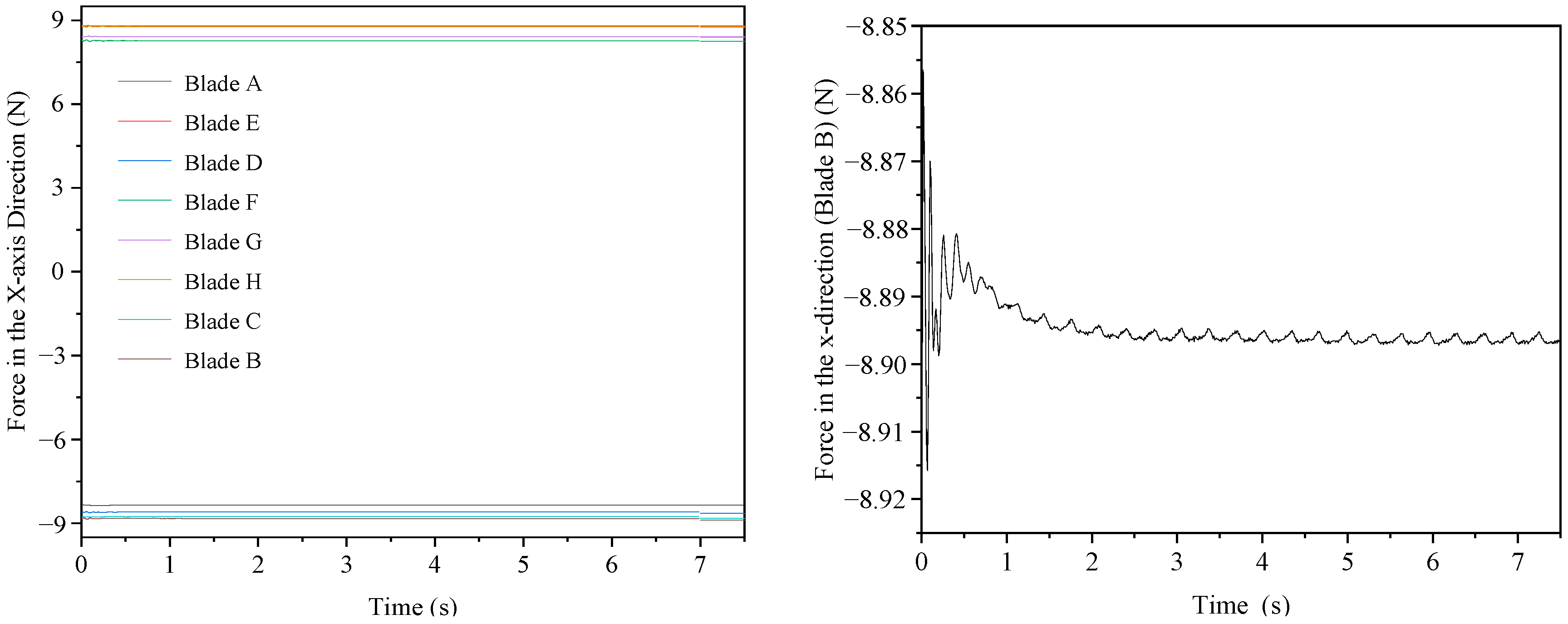

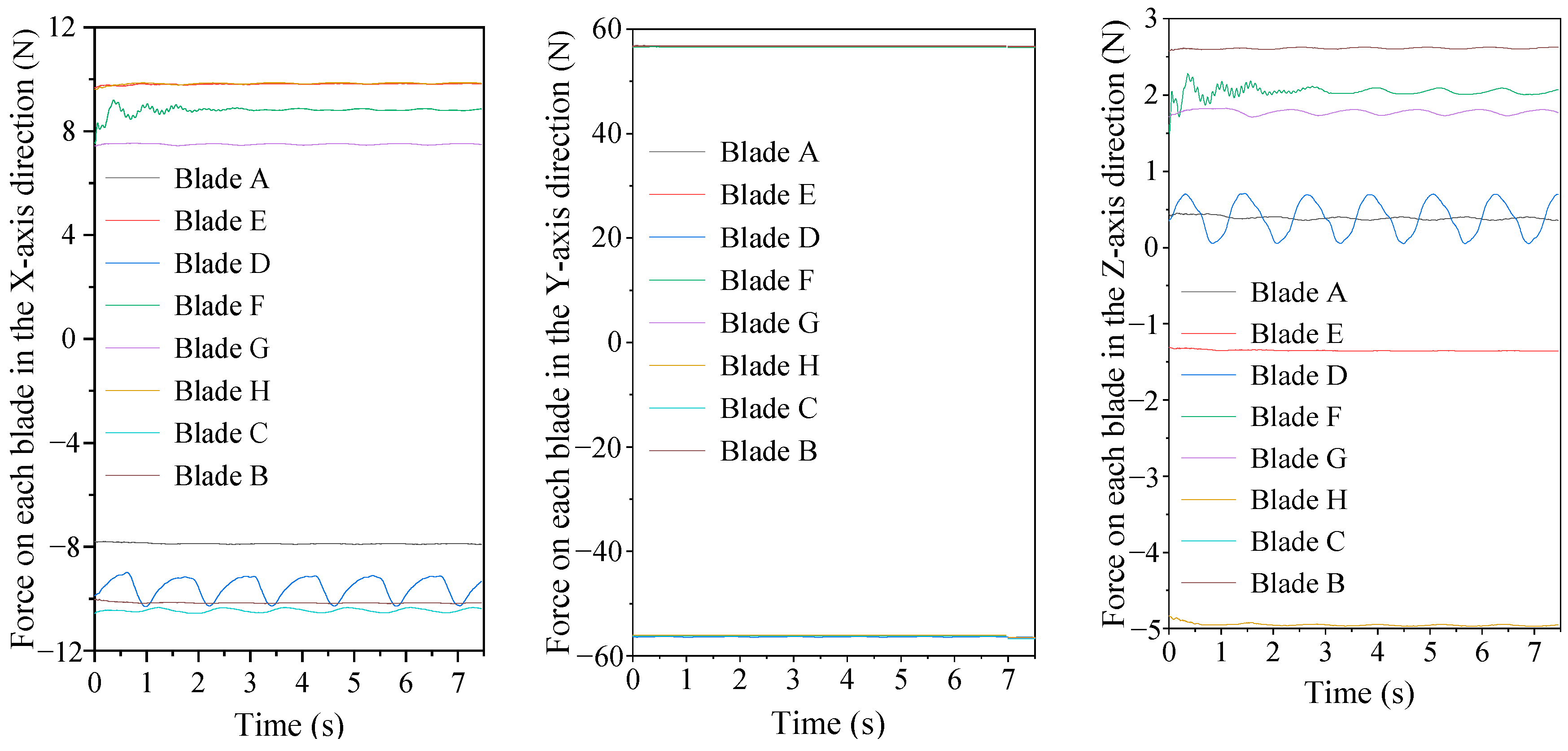
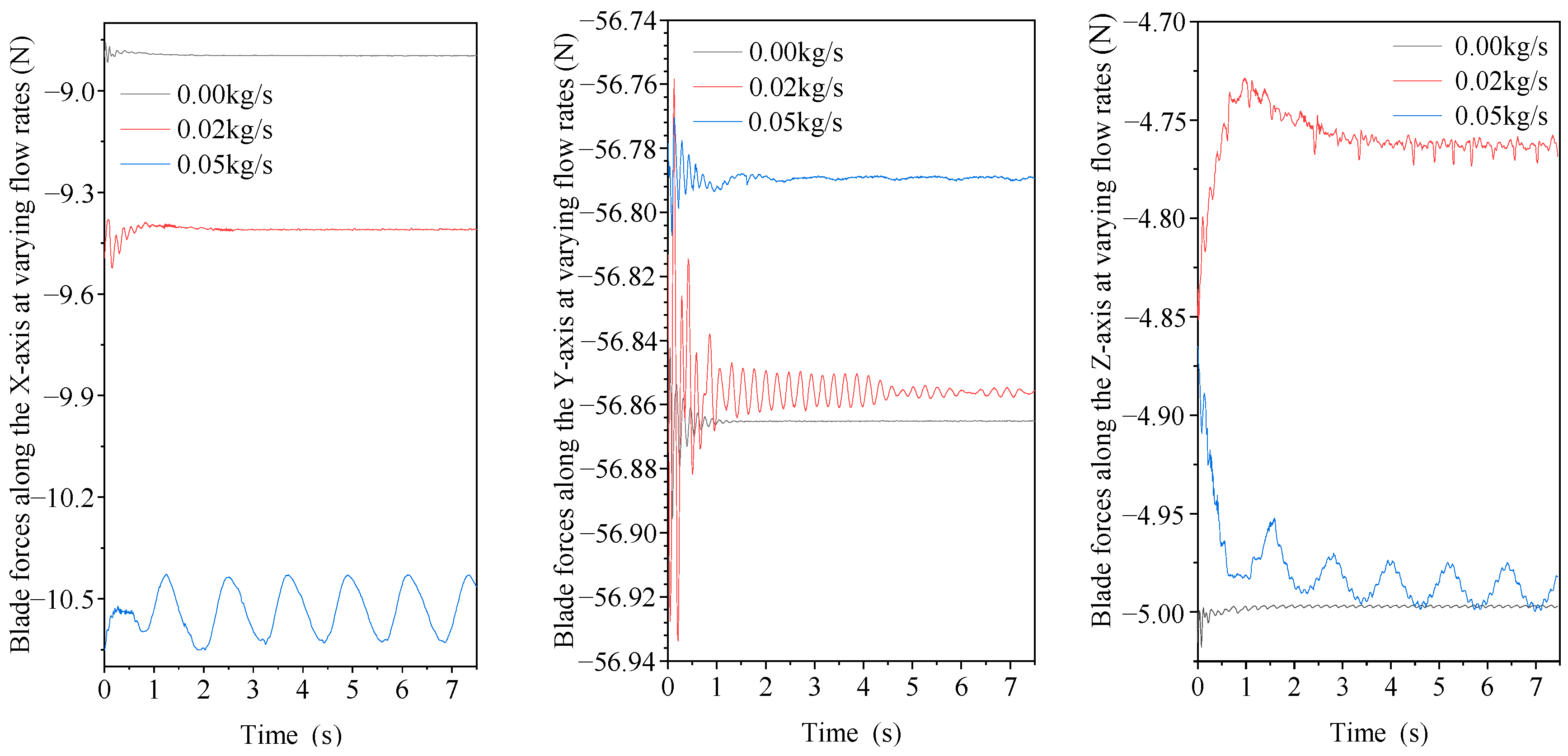
| Model Characteristics | Length L1 (mm) | Width L2 (mm) | Height L3 (mm) | Thickness L4 (mm) | Diameter D1 (mm) | Diameter D2 (mm) |
|---|---|---|---|---|---|---|
| Values | 11,239.5 | 15,972 | 22,800 | 22 | 1000 | 15 |
| Number/(×104) The Last-Stage Rotating Blades/Other Blades/The Total Grid Points of the Fluid Domain | The Maximum Mach Number | ||
|---|---|---|---|
| 352.8 × 2 | 302.9 | 3750 | 2.734 |
| 381.1 × 2 | 314.2 | 3950 | 2.651 |
| 399.4 × 2 | 336.7 | 4150 | 2.333 |
| 423.6 × 2 | 356.3 | 4350 | 2.332 |
| 451.4 × 2 | 379.6 | 4550 | 2.331 |
Disclaimer/Publisher’s Note: The statements, opinions and data contained in all publications are solely those of the individual author(s) and contributor(s) and not of MDPI and/or the editor(s). MDPI and/or the editor(s) disclaim responsibility for any injury to people or property resulting from any ideas, methods, instructions or products referred to in the content. |
© 2024 by the authors. Licensee MDPI, Basel, Switzerland. This article is an open access article distributed under the terms and conditions of the Creative Commons Attribution (CC BY) license (https://creativecommons.org/licenses/by/4.0/).
Share and Cite
Chen, F.; Zhong, Z.; Bai, K.; Liu, H.; Luo, M. The Effect of High-Speed Steam Discharged from the Bypass Diffusers on Low-Pressure Turbine Blades. Processes 2024, 12, 1459. https://doi.org/10.3390/pr12071459
Chen F, Zhong Z, Bai K, Liu H, Luo M. The Effect of High-Speed Steam Discharged from the Bypass Diffusers on Low-Pressure Turbine Blades. Processes. 2024; 12(7):1459. https://doi.org/10.3390/pr12071459
Chicago/Turabian StyleChen, Fang, Zhuhai Zhong, Kunlun Bai, Honglin Liu, and Ming Luo. 2024. "The Effect of High-Speed Steam Discharged from the Bypass Diffusers on Low-Pressure Turbine Blades" Processes 12, no. 7: 1459. https://doi.org/10.3390/pr12071459





